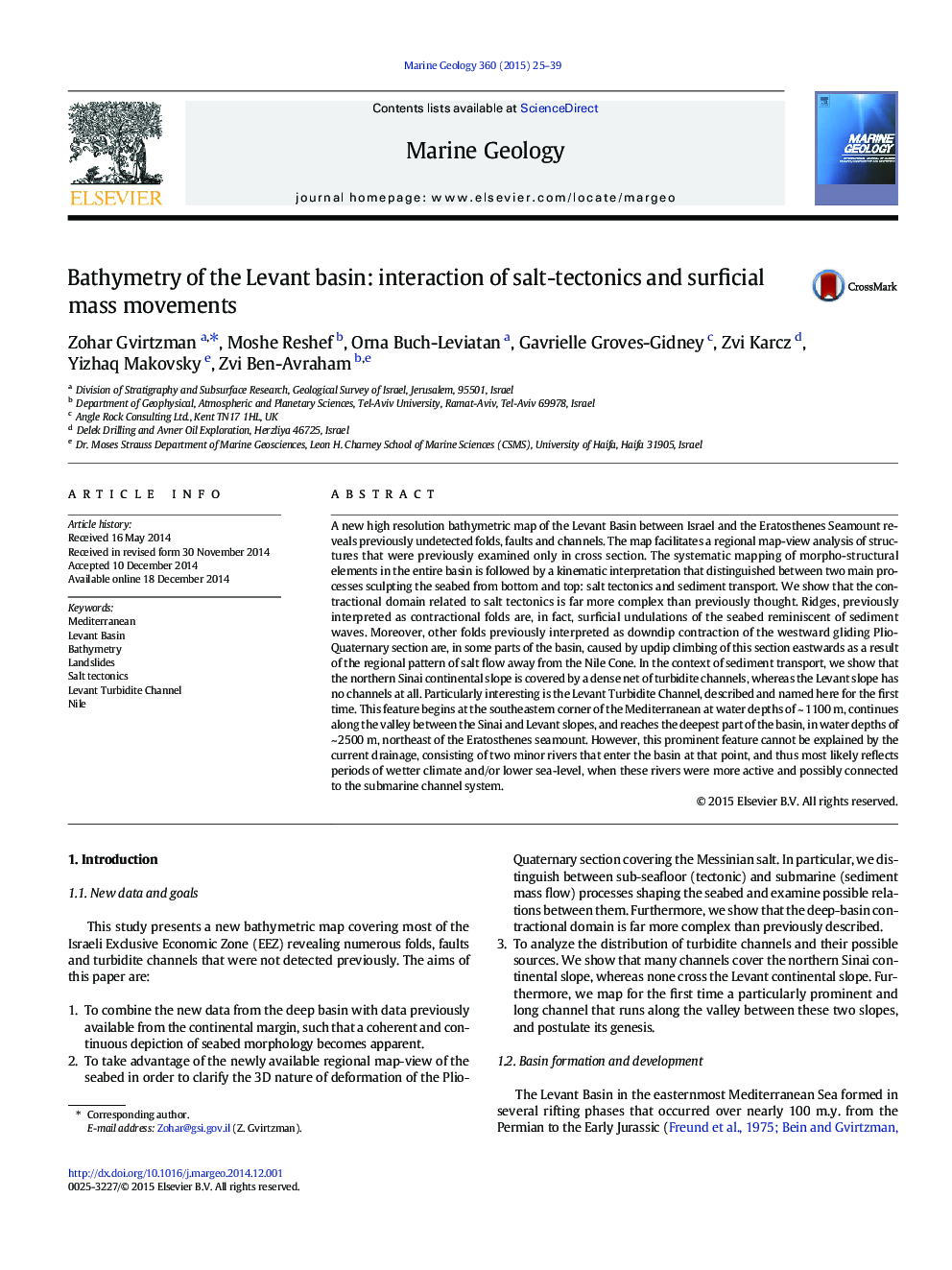| کد مقاله | کد نشریه | سال انتشار | مقاله انگلیسی | نسخه تمام متن |
|---|---|---|---|---|
| 4718210 | 1639092 | 2015 | 15 صفحه PDF | دانلود رایگان |
• High-resolution new bathymetric map of the Levant Basin is compiled.
• Map reveals previously undetected faults, folds and turbidite channels.
• Shortening domain related to salt tectonics is more complex than previously thought.
• Instead of gliding downdip, the overburden is pushed updip by underlying salt flow.
• The Levant Submarine Channel (270 km long) is described/discussed for the first time.
A new high resolution bathymetric map of the Levant Basin between Israel and the Eratosthenes Seamount reveals previously undetected folds, faults and channels. The map facilitates a regional map-view analysis of structures that were previously examined only in cross section. The systematic mapping of morpho-structural elements in the entire basin is followed by a kinematic interpretation that distinguished between two main processes sculpting the seabed from bottom and top: salt tectonics and sediment transport. We show that the contractional domain related to salt tectonics is far more complex than previously thought. Ridges, previously interpreted as contractional folds are, in fact, surficial undulations of the seabed reminiscent of sediment waves. Moreover, other folds previously interpreted as downdip contraction of the westward gliding Plio-Quaternary section are, in some parts of the basin, caused by updip climbing of this section eastwards as a result of the regional pattern of salt flow away from the Nile Cone. In the context of sediment transport, we show that the northern Sinai continental slope is covered by a dense net of turbidite channels, whereas the Levant slope has no channels at all. Particularly interesting is the Levant Turbidite Channel, described and named here for the first time. This feature begins at the southeastern corner of the Mediterranean at water depths of ~ 1100 m, continues along the valley between the Sinai and Levant slopes, and reaches the deepest part of the basin, in water depths of ~ 2500 m, northeast of the Eratosthenes seamount. However, this prominent feature cannot be explained by the current drainage, consisting of two minor rivers that enter the basin at that point, and thus most likely reflects periods of wetter climate and/or lower sea-level, when these rivers were more active and possibly connected to the submarine channel system.
Journal: Marine Geology - Volume 360, 1 February 2015, Pages 25–39
